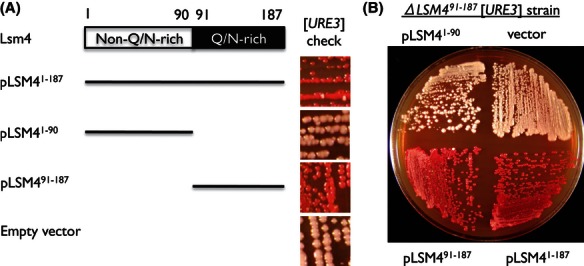Figure 2.

The Q/N-rich region of Lsm4 possesses antiprion activity. (A) The [URE3] loss by pLSM491–187. [URE3][rnq−] strain NPK302 was transformed with pRS425GPDp-LSM4 (expressing full-length Lsm4), pRS425GPDp-LSM41–90 (non-Q/N-rich region; residues 1–90), pRS425GPDp-LSM491–187 (Q/N-rich region; residues 91–187), or an empty vector. Transformants were subjected to the colony color assay. (B) Independence of the curing process from mRNA processing/decay. Coding region of Lsm4's Q/N-rich region was deleted from NPK302 to establish a new strain (ND32) where Lsm4's Q/N-rich region is orthogonal to its non-Q/N-rich region. The experiment as in (A) was then conducted using the ND32 strain.
